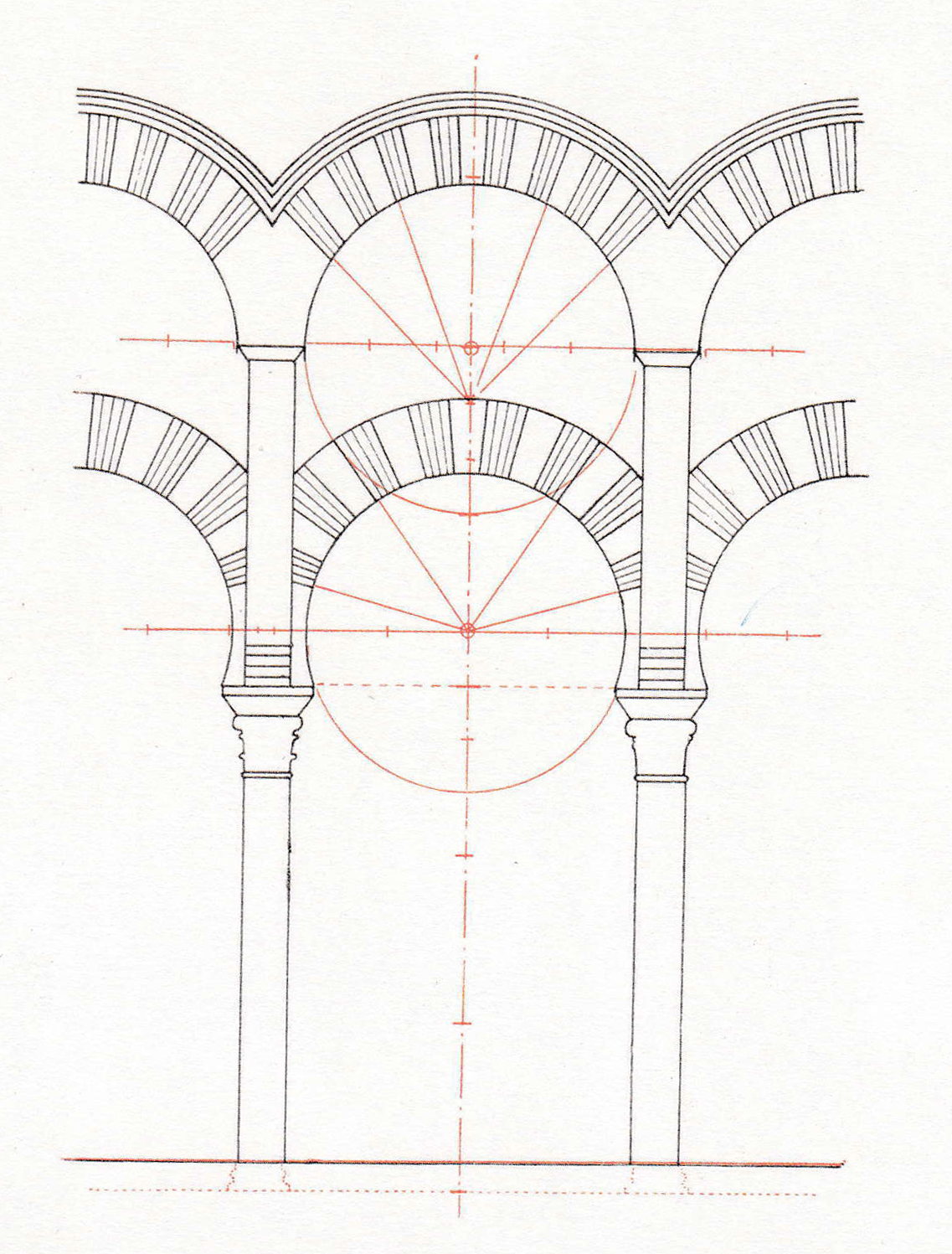The basic elements of the mosque are the regularly repeating bays of double arches: the upper ones, which are structural and support the roof, are semi-circular (of Roman origin) and the bottom ones, which act as structural ‘ties’ are horseshoe-arches (of Visigothic origin). The arches are made of alternating voussoirs of stone (limestone) and brick.
There are approximately 1250 columns of varying heights and different stone material. These columns were reused from other structures in the area and they were adapted for this use. The bases and capitals of the columns vary in size and detailing, in order to compensate for the necessary heights.
Lacking the materials necessary for tall monumental columns, the strategy of the double arches made it possible to achieve the desired additional height for such a large space by using short columns with additional masonry piers.
Merida-aqueduct
Roman aqueduct in Merida, Spain. Possible local historical antecedent for the use of superimposed arches.
Fernando Chueca Goitia, Historia de la Arquitectural Espanola 1965
Diagram indicating the different geometries of the semi circular and horseshoe arches in the Cordoba Mosque.
Emilio Camps Cazorla, CSIC 1953 “Modulo, proporciones y composicion en la arquitectura califal cordobesa”.
Diagram comparing the geometries of the double arches of the first phases of the mosque with the later polylobed arches.
Gabriel Ruiz Cabrero, Dibujos de la Catedral de Cordoba, Cabildo Catedral de Cordoba, Cordoba 2009







